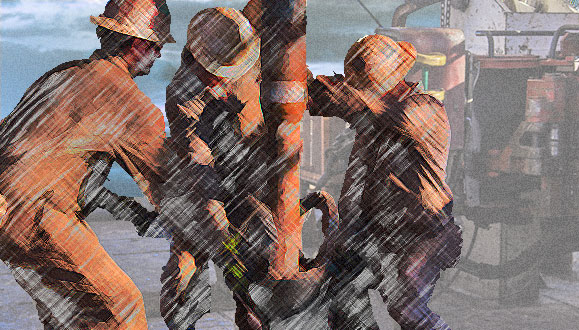Drilling Ahead: Companies can drive success, add value by embracing neurodiversity

By Linda Hsieh, Editor & Publisher
In my role with IADC and this magazine, I get the opportunity to attend a lot of conferences and events where I see and hear a wealth of insightful speakers talk about trends and innovations in this industry. While there is something to be learned from all those speakers, every so often there is a particular speaker whose talk really resonates on a deeper level and makes a lasting impact.
This happened for me at the Diversity and Inclusion (D&I) session at this year’s IADC/SPE International Drilling
Conference in March. The session focused on the mind-opening concept of neuro-diversity.
Neurodiversity refers to the idea that people’s brains are wired differently, so people experience this world and human interactions in vastly different ways. It recognizes that having a different neurological setup is simply a natural variation, like gender or ethnicity.
Crystal Holmes, an Agile Coach with BP, shared her personal story of not being diagnosed with ADHD and autism until she was an adult. For years, she had masked her struggles navigating social interactions, describing that she often felt “like an outsider in a world governed by rules that I could not decipher.”
But through the Neurodiversity Group at BP, Ms Holmes found acceptance and belonging. Now, as Co-Chair of that group, she’s helping the company to drive business success by embracing neurodiversity in its recruitment and advertising strategies, as well as messaging to employees, customers and suppliers. “Ultimately, our reach was broadened, expanding the bottom line and adding value,” she said.
It’s true that neurodivergent individuals may have difficulties with tasks that so-called “neurotypical” people would consider to be simple or natural, like reading or catching social cues during conversations. However, neurodivergent individuals come with “superpowers” of their own, Ms Holmes said. Her own superpower, she noted, is pattern recognition. For example, she was able to look at biomarkers from the medical field, recognize patterns and then translate those patterns into an unrelated domain like oil and gas safety and risk management. “I was able to come up with a continuous improvement metric to identify weaknesses and vulnerabilities in a business stream or a team workflow that we can now monitor and track.”
Neuro-inclusive workplace
To create an inclusive work environment, companies can encourage their neuro-divergent employees to self-identify and make adjustments as needed. However, Ms Holmes urged companies to take a broader approach – by considering neurodiversity throughout the employee life cycle, from recruitment to onboarding to retention to promotion. She also suggested some general concepts that can help with creating neuro-inclusive work environments:
Start by recognizing that people have different skills and different ways of working, and they need different types of support. “Focus on the results that someone delivers, not the process they applied to achieve them,” she said.
Don’t jump to conclusions about neuro-divergent individuals. Someone wearing noise-canceling headphones in the office doesn’t necessarily mean they lack team spirit; they may be trying to prevent sensory overload. Or, if someone can’t answer a question on the spot, it doesn’t mean they’re not articulate. “Maybe they’re working on something entirely different, and they need a moment to transition from one topic to the next.”
Be accepting of behaviors that might deviate from the norm, like fidgeting or not making eye contact. “Neurotypical” individuals often notice these types of behaviors in other people, “but it’s important to recognize your own bias and not allow these observations to overshadow everything that might be great about that person.” DC




